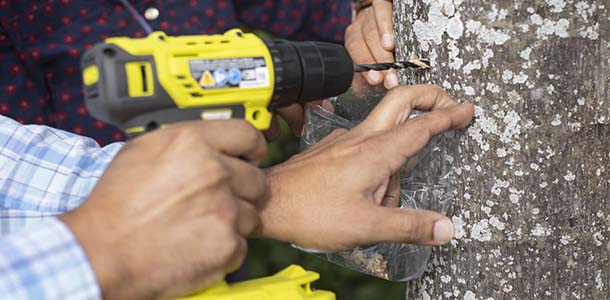Abstract
Palms are an integral part of the urban landscape in Florida. Ganoderma butt rot of palms, a disease caused by the wood-decaying white-rot fungus Ganoderma zonatum, is one of the major biotic concerns for the landscape industry. The lethal disease is prevalent across palm-growing regions in the US, and all palm species are believed to be susceptible to this fungus. It may take six months to a year for the diseased palm to die once the initial symptoms appear. But with the availability of a disease diagnostic assay, this fungal pathogen can be detected using saw dust samples collected from declining palms, several months before symptoms appear. Collect good quality samples by following these steps and understanding the caveats associated with each step.

This work is licensed under a Creative Commons Attribution-NonCommercial-NoDerivatives 4.0 International License.
Copyright (c) 2024 UF/IFAS

